Just so you know, as an Amazon Associate we earn from qualifying purchases made via bold red links, buttons or images.
Last Updated on December 3, 2023
Our search for the best home coffee roaster revealed that there are excellent choices for people at all levels of experience. Rather than choose just one, we decided to choose our favorite model for each level:
- Entry level: Whirley Pop Popcorn Popper
- Novice: FreshRoast SR540
- Intermediate: Kaldi Wide
- Advanced: Huky 500T
- Semi-pro: Aillio Bullet R1
It would make perfect sense to work your way up through these models as you learn the basics of coffee roasting and then develop some experience. Each one is a logical step up from the one that came before.
Best Home Coffee Roasters
Later in this post, we discuss the decisions you need to think about when considering a home coffee roaster. If you answer all those questions and it doesn’t look like any of our top choices is the ideal fit for your situation, don’t worry—we’ll also list some of the main competitors for these machines, so you can look into those.
Entry Level: Whirley Pop Popcorn Popper
- Capacity: Performs well up to 250 grams
- Size: 9.3 inches tall, 7.5 inches wide, 9-inch handle and crank
- Type: Conduction and convection
- Automation: None
- Powered by: Hand and stovetop/grill
- Smoke suppression: None
- Chaff collection: None
Before I tried roasting my own coffee beans, I assumed it was a difficult task that required years or practice. Then I got a Whirley Pop and discovered how easy it is.
Yes, you can get better with years of practice, but you’ll be amazed at how much you can accomplish with this little pot that was originally designed for popping corn. It is a hands-on method that teaches you all the basics of roasting without the aid of temperature probes and computers.
I would argue that you absolutely should build your knowledge foundation with a Whirley Pop before moving on to other roasters. You’ll learn what roasting is all about and understand what the more advanced roasting devices are trying to achieve.
And if the Whirley Pop is where you stop, that’s just fine too.
I won’t get into a long description of the device here, but feel free to visit our post on Whirley Pop coffee roasting, which includes the following video where we take you through the entire roasting process from green coffee beans to a dark roast:
Competitors to the Whirley Pop
The Whirley Pop is very low on the ladder of coffee roasters. Heck, it isn’t even really a coffee roaster. If you’re looking for alternatives to the Whirley Pop, you’re probably looking at roasting beans on a baking sheet in your oven (which many people do), or in a cast-iron skillet on your stove while stirring with a wooden spoon (which people also do). The Whirley Pop is similar to the skillet method—it just makes bean agitation easier and comes with a lid which is useful for keeping heat in the chamber.
Novice: Fresh Roast SR540
- Capacity: 140 grams (5 ounces)
- Size: 11 inches tall, 7 inches wide, 7.5 inches deep
- Type: Fluid bed
- Automation: Nine settings for heat and fan, with manual intervention
- Powered by: Electricity
- Smoke suppression: None; use range hood
- Chaff collection: Chaff trapped in lid
Some people graduate from the Whirley Pop to a hot air popcorn popper, and the Fresh Roast SR540 is the logical step up from that. It is essentially the same thing, but this air roaster was made specifically for roasting coffee beans and gives you a level of control that you don’t get from a single-setting popcorn machine.
It’s really easy to use, and great value for the money.
The SR540 is about the same size as a blender, so it can be a countertop appliance and allow you to do all your roasting in the kitchen. It does not have any real smoke control, though. You will absolutely need good ventilation in your kitchen if you’re planning to go deep into roasts.
Capacity is limited to about 140 grams or just over a quarter-pound. That’s not a lot, and it’s an important consideration. The SR540 has a relatively short roasting time—taking about 10 minutes—so in theory you could roast four batches of beans in an hour to give yourself a full pound for the week. However, the manufacturer’s instructions caution users against roasting back to back. It’s important to let the machine cool down for about 30 minutes between roasts if you want it to have the longest possible life.
The advantage of a low-capacity roaster is that it lets you learn without wasting a lot of beans. Roasting in small batches allows you to dump the roasted beans that don’t turn out so well, or drink them quickly so you can move on to something better.
While the SR540 doesn’t offer you a professional level of control, it does give you nine heat settings and nine fan settings (well, sort of—more on that in a moment). They’re all controlled with the same dial. You can adjust the temperature or fan strength at any time during your roast, and also check in on the temperature of the beans.
Here’s a video from Sweet Maria’s explaining what sets this air roaster apart from its predecessor, the SR500:
Don’t let those nine fan settings fool you. Any setting lower than five probably won’t provide enough air power to properly agitate raw beans. This can make things tricky during the early part of a roast. You need lots of fan power to move the beans, but of course the fan cools down your beans at a time when high temperature is needed to dry them quickly. It’s a balancing act, but with practice you’ll get it. Once those beans dry out they become lighter and you can gradually lower the fan to get more heat.
You’ll be thankful for the fan’s cooling abilities when you come to the end of your roast. The cooling setting on the SR540 stops the roast very quickly.
Competitors to the SR540
The SR540 doesn’t really have any peers in its price range. The best popcorn roaster is probably the Presto PopLite, which costs considerably less and offers considerably less control. It’s a good choice if you really want to keep things simple, but if you want to start learning how to bring out the best in beans, the SR540 is a significant upgrade.
Intermediate: Kaldi Wide
- Capacity: 300g
- Size: 14.5″ tall, 6.7″ wide, 18.1″ deep
- Type: Drum (radiant and conduction)
- Automation: None
- Powered by: Gas burner and plug-in electric motor
- Smoke suppression: None
- Chaff collection: Removable mesh plate beneath drum
The Kaldi Wide looks and operates essentially like the giant roasting machines you’ll find in the back of commercial roasting facilities. It’s just a lot smaller.
You place it on top of a gas burner, plug it in, pour in your coffee beans, and away you go. There is no automation of the roasting process, other than the electric motor that turns the stainless steel drum. A thermometer allows you to monitor the temperature inside the roasting chamber and make notes so you can adjust future roasts.
It is precisely this manual spirit that makes the Kaldi Wide such a great tool for learning the nuances of coffee roasting. You can’t just sit on the sidelines. You have to participate. Become an artisan.
The Kaldi is really well built, and quite smart-looking. It’s a shiny stainless steel roaster made of heavy gauge materials—very sturdy for a home roaster.
You need to provide your own heat source. If you have a big gas stove you can try it there, but the Kaldi has no smoke-suppression system and will fill up your kitchen if you don’t have a powerful ventilation hood over your range. You’re better off purchasing a standalone propane burner separately and taking everything out to your garage. About 7500 BTUs should do the trick. Leave the garage door open.
Here’s a little video showing the Kaldi Wide in action:
One of our favorite things about the Kaldi Wide is that it can handle 300 grams of green coffee and can also do back-to-back roasts without any difficulty. That means you can roast yourself a pound and half of coffee in 30 minutes. Not bad.
We also like how easy it is to hear first crack and second crack. We don’t know why those milestones sound louder with the Kaldi than they do with other roasters, but it’s very helpful when you’re relying on sight, sound and smell to get the roast you want.
If you are more technologically inclined, it is possible to replace the standard thermometer with a steel digital probe and connect it to a digital display or to roasting software. Many users have done this. Others have dealt with smoke suppression by rigging ducts that they swing into place after the beans go in and the funnel is removed.
Another nice bit of engineering in the Kaldi is the mesh plate that slides into the bottom of the machine between your burner and the drum. Its main purpose is to diffuse heat so that your circular burner doesn’t heat the beans in a circular pattern, but it doubles as a pretty effective chaff collector that can be pulled out and dumped between roasts.
If there’s a drawback to the Kaldi, it’s that it doesn’t have as large and active a community of users as some of its competitors. You can find pockets of them online—and they love their machines—but you won’t find the same mountain of information you’ll find on the Huky machine that we’ll discuss below. You’re a little bit on your own (even the instructions are in Korean!), but because it’s so manual and analog, you will learn by practising.
Competitors to the Kaldi Wide
You could also look into the Gene Cafe CBR-101 and the Hottop 8828B-2K+. These are both drum roasters, each with about a half-pound capacity. If it’s automation you’re after, learn toward the Gene Cafe. For manual control, go with the Hottop. The Hottop is the best of the three at cooling roasted beans, because it drops them to an external tray for cooling when the roast is over.
Advanced: Huky 500T
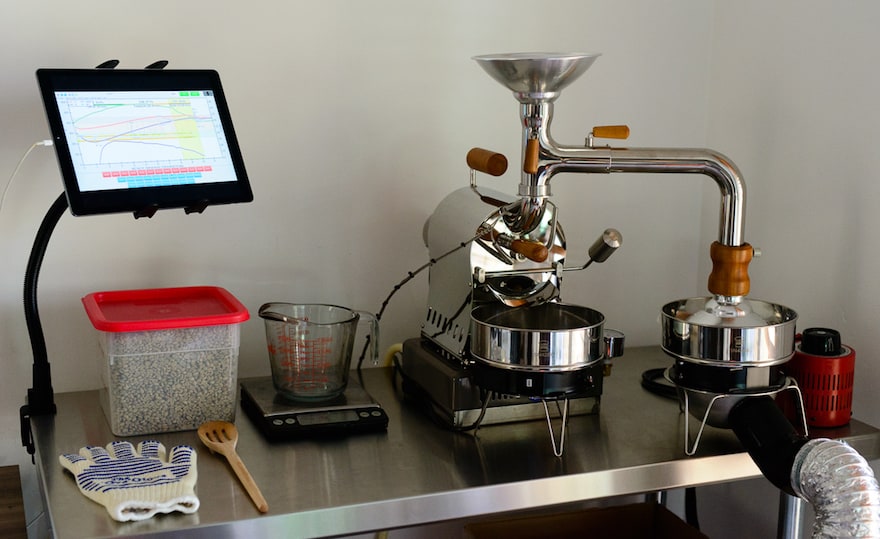
- Capacity: 500 grams (17 ounces)
- Size: 15.75 inches tall, 7.5 inches wide, 13.8 inches deep
- Type: Drum (convection and conduction)
- Automation: Fully manual
- Powered by: Gas
- Smoke suppression: Uses exhaust pipe and fan to vent smoke from machine; DIY solution required to carry smoke from roasting area
- Chaff collection: Usually a combination of fan and sieve
Now we’re getting to the fun stuff.
The Huky 500T has a cult following. It’s a legitimate, industrial-style drum roaster just like the ones you’ll find in a large commercial roasting operation, only on a much smaller scale for the home roaster. To quote a Reddit enthusiast: “You can do anything on this roaster that you can on the largest most expensive roaster—but only 500g at a time.”
You might never outgrow it.
Let’s watch the Huky in action:
The Huky was invented by a retired machine shop teacher in Taiwan named Kuanho Li, who started making them himself around 2004. Most people get their machines by emailing Mr. Li. He doesn’t even have a website.
The upside of this is that Mr. Li by all accounts provides great customer service. He will customize your roaster with almost any feature or modification you want, answer questions, and supply parts when you need them. The downside is that he is a one-man operation and as of this writing, he is not a young man. Nobody really knows who will help them with their Huky when Mr. Li is no longer able to do so.
But for now, Huky is the choice for serious hobbyists. You can roast up to a pound at a time, with no waiting period between roasts. The Huky operates above a gas burner, which Mr. Li can supply or you can supply yourself. They put out a lot of heat. No worries about about a roast dragging on if you don’t want it to.
The stainless steel Huky is as good-looking as it is indestructible. And if you’re a little bit handy, with a few easy purchases from the hardware store you can configure it in any number of ways to suit your roasting environment.
The machine is totally manual and gives you full control over roasting process—from the burner flame to the fan speed and ventilation.
On the other hand, if you’re looking for a machine that’s plug-and-play and doesn’t ask much of you, the Huky is not for you. It has a lot of different parts, and you need to understand how they all work together in order to optimize your setup.
The good news is that Huky has a devoted online community that can help. These folks used to gather at the Huky Forum, which is no longer active but remains online as a valuable resource that probably contains the answer to any question you might have. Huky owners are still very active at Home-Barista.com and on Reddit’s coffee-roasting subreddit. Dive into the forums—you’ll benefit from the collective wisdom!
Among the decisions you’ll have to make is how to customize your initial order. Mr. Li offers a lot of options in addition to the basic roasting drum. Some are essential, others are nice-to-haves. Each will add to the price of your order.
Most users agree on a few extras that you shouldn’t go without: a second fan, a second funnel and a second bean tray for cooling; a device such as a light dimmer to control fan speed; an extra digital probe for accurate temperature measurements.
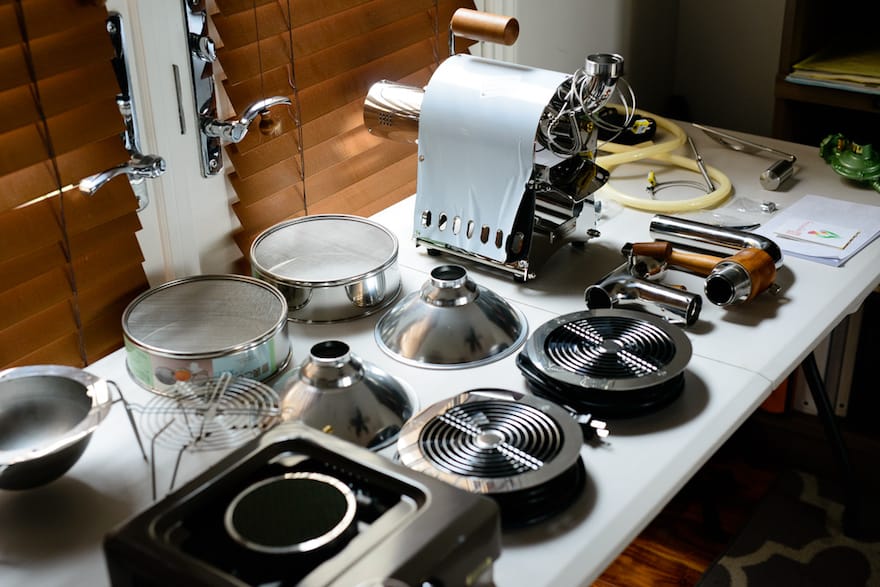
It’s beyond the scope of this article to explain how you’ll put all that gear to use, but the answers are in the forums. Check out this in-depth review of the Huky to get an idea of what ordering a Huky is like.
For serious roasters, the digital temperature probes are key. They take you into the world of data-driven coffee roasting. They measure temperature and connect via USB to a laptop computer running open-source software called Artisan, which records everything that happens during a roast. It produces a graph of temperature over time called a “roast profile,” and you can save your roast profiles along with your tasting notes for a permanent log of what works best.
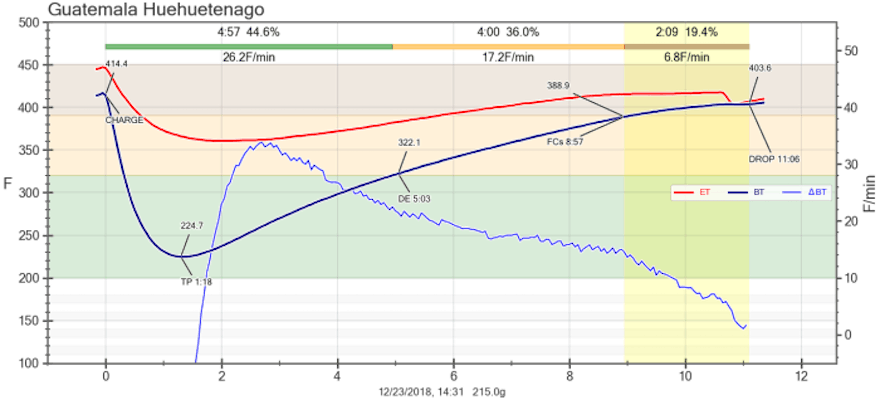
With Artisan software, you can spend some time establishing a baseline roast profile, and then begin tweaking one variable at a time to see how it impacts the flavor of the roasted coffee. A great tool for learning.
Competitors to the Huky 500T
The Huky’s main competitor is the Quest M3, an electric roaster with a 300-gram capacity.
Semi-Pro: Aillio Bullet R1
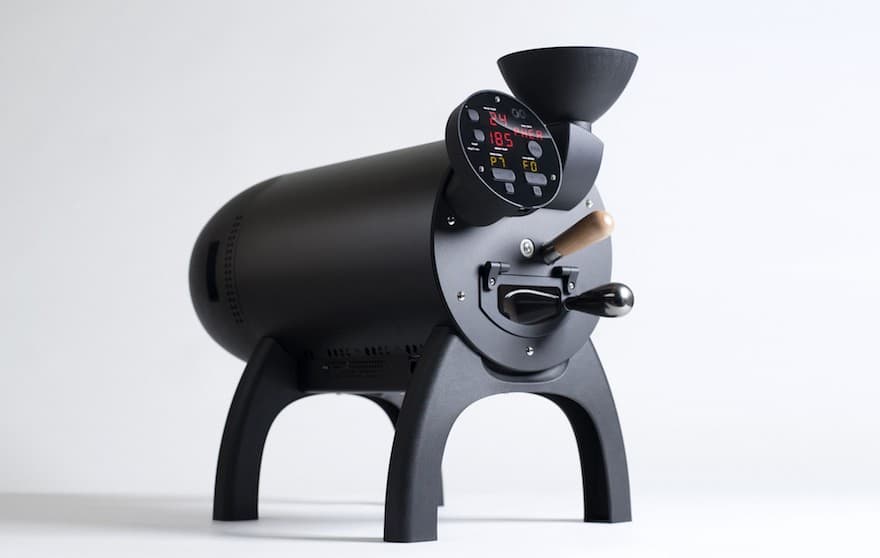
- Capacity: One kilogram (2.2 pounds)
- Size: 16.5 inches tall, 12 inches wide, 23 inches deep
- Type: Drum (induction)
- Automation: Multiple settings for power, fan, drum speed; mid-roast intervention; ability to replicate digital roast profiles automatically
- Powered by: Electricity
- Smoke suppression: Smoke vent at rear top; DIY solution required to carry smoke from roasting area
- Chaff collection: Chaff compartment at rear
The Aillio Bullet R1 has been around only since 2016, but has gained a real following and is launching a lot of hobby roasters into the small craft roasting business.
A case in point: Matt Johnson of Prototype Coffee in Vancouver. Johnson mastered the Bullet and bought three of them to open a cafe where people can watch their beans being roasted by a row of Bullets right behind the bar:
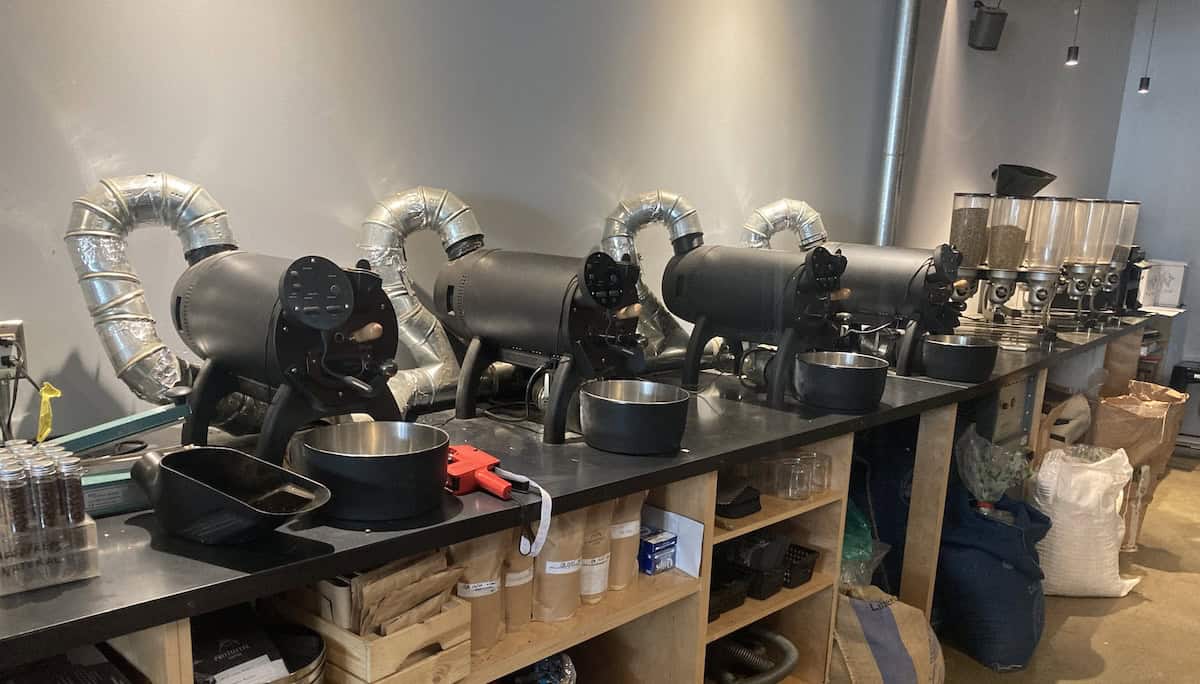
How is this even possible?
Well, the Bullet is an electric machine that uses ultra-efficient induction heating, which means it has no trouble roasting a kilogram (2.2 pounds) to a light roast in less than nine minutes.
It’s a great-looking matte black machine that requires none of the Huky’s Frankenstein-style assembly. It’s high-tech inside and out, and its makers are still working hard to improve it. They aren’t done yet.
Brothers Jacob and Jonas Lillie invented the Bullet, and one of their big innovations has been the infrared bean temperature sensing system (IBTS). This method of measuring bean temperature in real time using an infrared probe provides a more accurate roast profile than is possible with a traditional probe.
The Bullet works in conjunction with Aillio’s proprietary profiling software called Roastime. You connect the roaster to your laptop and watch your roast as it’s happening. Any adjustments you make during the roast turn up on the computer screen. It’s like the digital odometer on the dashboard of a car.
You can sync your roast profiles to the cloud and save them for future use. For example, if a particular profile got you exactly what you wanted from a kilogram of Guatemalan, you can load up another kilo next week, play back the roast profile and the Bullet will roast them exactly the same way.
And if that isn’t cool enough for you, you can also connect with roasters elsewhere in the world and download their roast profiles to apply to your beans.
The Bullet R1’s digital control panel gives you control over the following:
- pre-heat temperature
- fan speed during the roast (12 settings)
- drum rotation speed (nine settings)
- power level (nine settings)
All of these (with the exception of pre-heat temperature) are adjustable mid-roast, and Roastime will capture any adjustments you make.
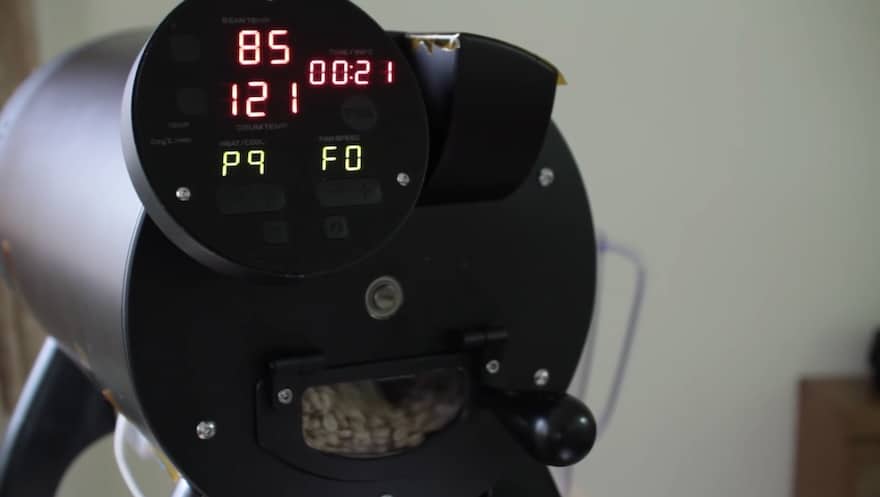
The Bullet has no real smoke suppression system, just an exhaust vent on top of the machine near the back. If you’re roasting indoors, you’ll need to come up with a way to carry that smoke away from the vent and out of your house. A few feet of duct tubing will do the trick. If you need a longer segment than that, you can set up a fan inside the duct to help the smoke along.
One final thought about capacity. Roasting a full kilogram at a time means you can turn out enough volume to sell at farmers markets, or distribute coffee to friends and family at Christmas, which is great. However, you should be aware that the Bullet also has a MINIMUM capacity. It is 300 grams, or over half a pound.
This makes it difficult to roast really small samples when you’re experimenting. Every time you try a new profile, you’re making a week’s worth of coffee. Hopefully you know some people who will drink it—even when the batch doesn’t turn out as you’d hoped.
Competitors to the Aillio Bullet R1
The Bullet’s closest competitor is probably the Mill City 500-gram roaster, although the Mill City is more expensive and offers only half the capacity. What might sway you in favour of the Mill City is that it is essentially a traditional industrial roaster, and behaves the same way. The Bullet’s technology is great, but if your ultimate aim is to open a roastery with traditional industrial equipment, then the Mill City is a closer facsimile on which to perfect your craft. You can roast great coffee on the Bullet and learn a lot, but it won’t train you to operate a traditional roaster.
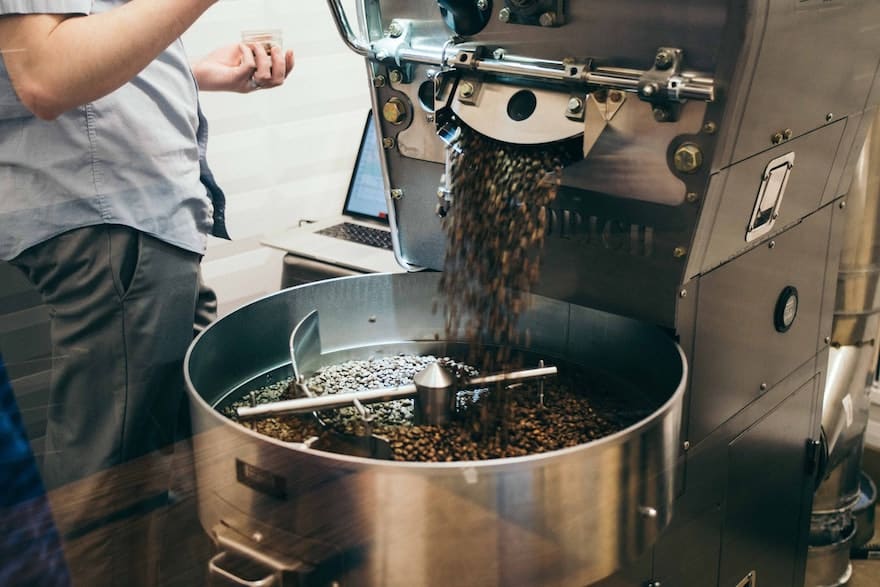
How to Choose a Coffee Roaster
Before you decide on a coffee roaster, you need to know the answers to some questions. Some of these questions are for the manufacturer or merchant, but the most important question is for you.
How Much Coffee Do You Want to Roast?
This matters the most. Coffee roasters have capacity limits, and if you attempt to go beyond them you will not be able to roast effectively.
Suppose you plan on roasting weekly—as you probably should to ensure your coffee is always fresh. It typically takes about 25 grams of beans to make two cups of coffee. So to drink two cups a day, you’ll need to roast 175 grams per week, or just over one-third of a pound.
But those are small cups. You’re a coffee fan, so you probably drink more than that. A good-size mug every day for you and your spouse/roommate will require twice as many beans. That’s 350 grams per week. You are already well beyond the capacity of some roasters.
Now, you can always roast half your beans first, and the other half afterward. Many people do. But then you must consider whether your roaster is capable of back-to-back roasts. Many aren’t. If not, you’ll have to wait for it to cool down between roasts. How much time do you have?
Now you see why capacity is probably the most important consideration of all.
How Much Space Do You Have?
Coffee roasters vary in size. They generally get bigger as you move toward more advanced models. If you want to roast on your kitchen counter using an inconspicuous appliance that can go in the cupboard when you’re done, there are options—just not as many as there are if you’re roasting in a garage or a basement workshop.
The roasters with the smallest footprints tend to be “fluid bed” roasters, while the larger ones are “drum” roasters. Let’s talk about the difference.
Fluid Bed vs. Drum
Fluid bed roasters are called that because the coffee beans tumble on a “bed” of fluid. The scientific definition of fluid is a gas or a liquid. In a coffee roaster, it’s a gas. Basically, hot air blows into the roaster and keeps the beans tumbling as they roast. It’s similar to an automatic popcorn popper. In fact, many people begin learning how to roast coffee on a popcorn popper.
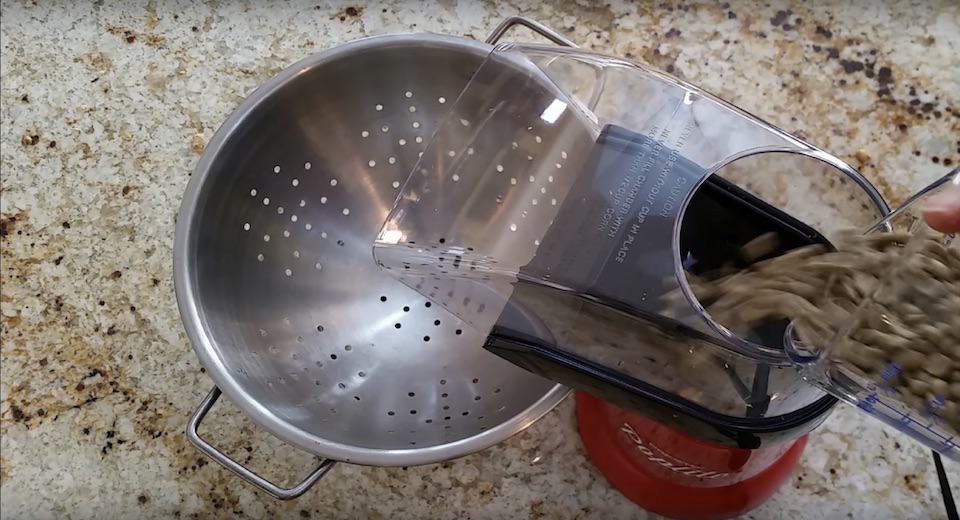
A drum roaster tumbles the beans in a rotating cylinder, or drum, that is heated from the bottom. It’s like a small metal barrel with an axle.
Fluid bed roasters roast more quickly, finishing off a typical roast in 8-12 minutes. Drum roasters usually need 14-20 minutes.
High-end professional roasters usually use drums, because they have much more capacity than fluid bed roasters. Imagine trying to move two pounds of beans around with nothing more than a blast of air. That would have to be quite a blast.
This is also why more advanced roasters tend to be bigger. Drum roasters take up more space.
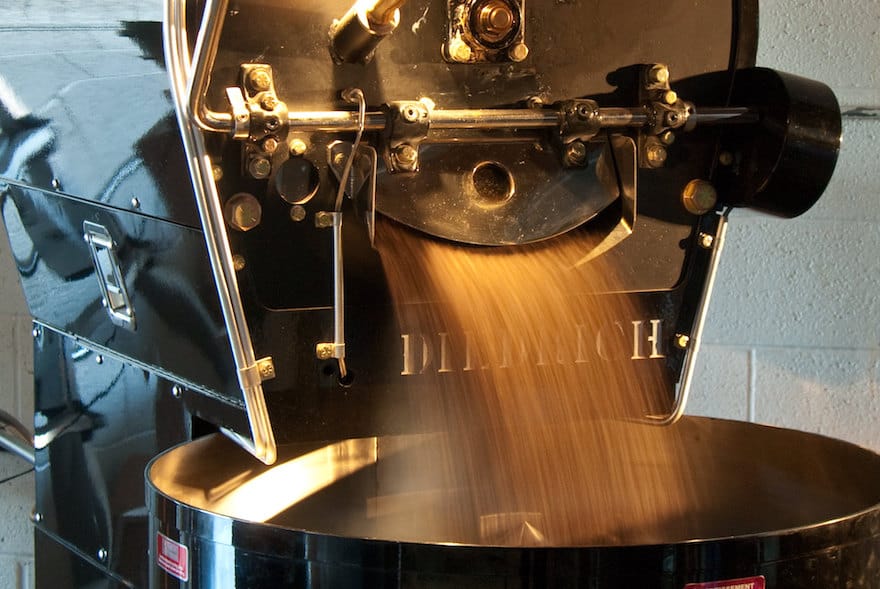
Fluid bed roasters, despite their limited capacity, have some notable advantages over drums. They roast beans very evenly, thanks to the constant agitation. They also usually offer some automatic features that make it relatively easy to replicate a good roast. Whatever settings bring you success should be able to hold up repeatedly, provided you use the same beans.
Programmable Roasters vs. Manual Roasters
This is where you decide how involved you want to be.
Some people just want to roast their own beans and not have to think about it too much. Many roasters offer the automation to make that possible.
Other people want to dive deep into the art and science of roasting, with full control over every little variable that can affect the roast. These people need manual roasters.
So think about whether this is a serious hobby and learning endeavour for you, or just a way to cut your coffee costs and skip some trips to the store. Either is fine. We will go over roasters that do both. Just know that you should avoid any roaster that will demand more attention than you’re prepared to give. And recognize how frustrating it would be to realize you want to learn all the nuances of roasting, just after you’ve spent good money on a machine that does everything for you.
Electric vs. Gas-Powered Roasters
Electric roasters are, of course, powered by electricity and tend to have a self-contained heat source. You plug them in, turn them on, and they heat up.
Gas-powered roasters are a little more diverse. Some require you to provide the burner, which could be a portable propane-powered burner or even just a spot on the gas stove in your kitchen. You place the roaster on top. Then there are others that come with their own burner, and you just provide the gas by connecting a propane tank.
Most electric roasters can’t provide the same heat that a burner does. If you’re getting into a high volume of beans and want to roast quickly, gas is usually the best bet. For most people, either kind will work. If anything, electricity offers a little more convenience at the expense of some versatility.
Smoke
Smoke is an unfortunate reality of coffee roasting. Coffee beans contain oil, and when that oil heats to a certain point, it begins to smoke. If you’re roasting dark, the smoke seems to increase exponentially as you reach second crack.
A roasting machine should have a vent for this smoke. If it’s just a countertop fluid bed roaster, you can probably get away with positioning it under the range hood above your stove and cranking the ventilation system up to high. Larger roasters may need a more complex system involving a fan and a flexible duct to carry the smoke away.
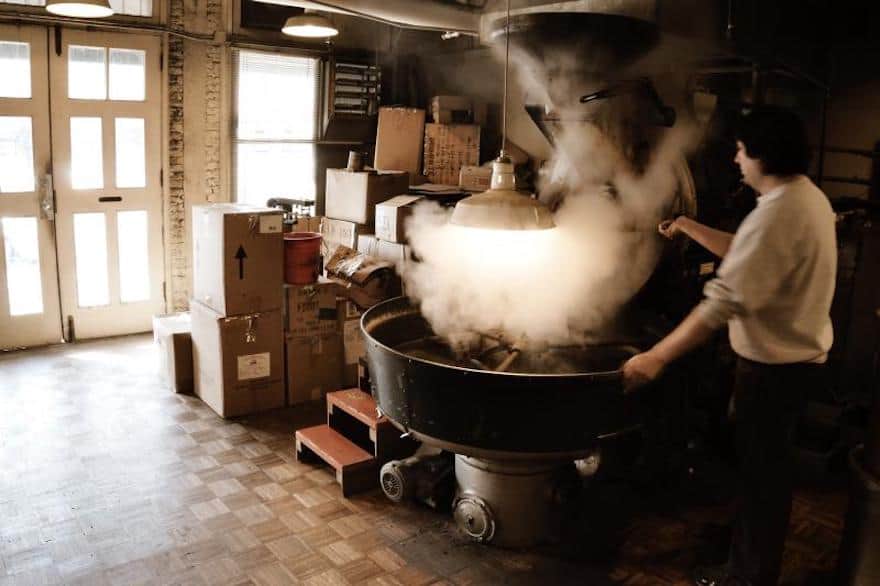
It’s all doable, but you’ll need to find out how the roaster handles smoke, think about where you’re going to roast, and where your exhaust will go. A little extra hardware and some handiwork may be required.
Chaff
Chaff is a byproduct of roasting coffee beans. It’s a very thin skin on the outside of a bean that dries up and comes off in flakes as the roast progresses. It’s coffee dandruff, and it’s a mess.
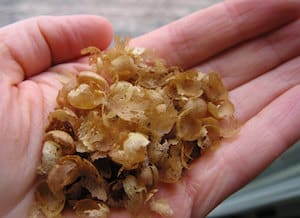
Most specialized coffee roasters have a mechanism for capturing chaff, and you usually have to empty it or clean it after the roast. (That part is important. Letting chaff build up can affect the performance of your roaster.) Some of these chaff collectors are more effective than others. There are also manufacturers who haven’t thought much about chaff collection at all, and you might have to rig your own solution.
Which Roaster is the Next Step For You?
Only you know where you are in your roasting journey, and that’s an important piece of information to have before deciding on one of these roasters. Regardless of your experience level, we’re confident that we’ve identified the best home coffee roaster for you to take the next step. But use our recommendations as a starting point for your own research, and really get to know your next roaster before you make the investment. The more you read up ahead of time, the easier it is to hit the grounds running when your roaster finally arrives.

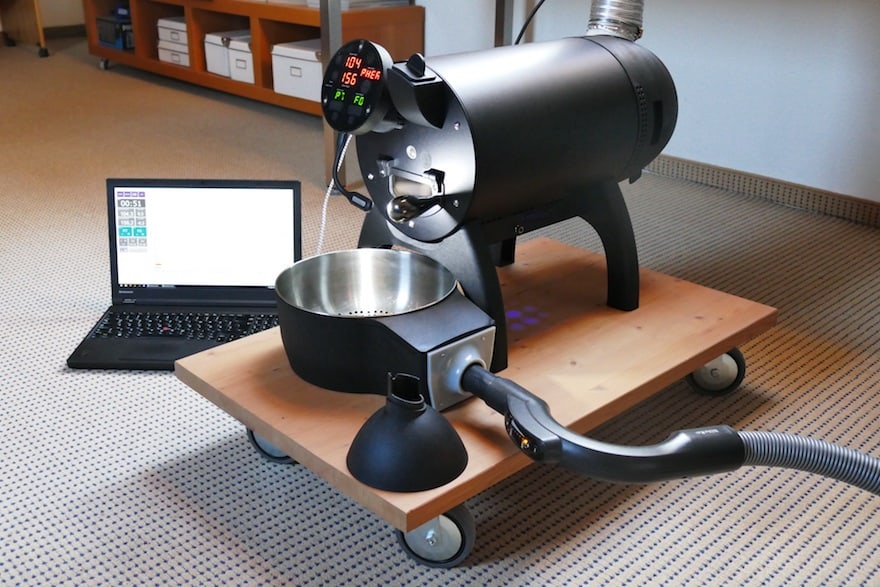

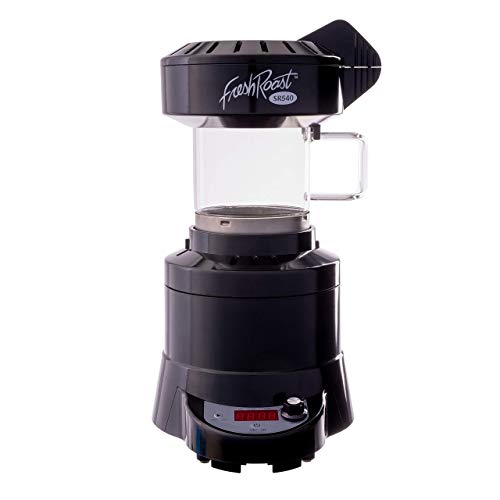


Cormarant roster is the best in the world ask real coffee Roasters ..made in the uk Cornwall
They certainly make cute little machines for the home coffee nerd with too much money, but real roasters would be talking about deidrich or san fransiscan.
I would recommend that you throw Hive Roaster into the ring against some of the aforementioned coffee roasters. It definitely outperforms a whirlypop or nuvo any day. I’m totally biased because I know the maker-but I’m not wrong. The control is superior and the complexity of flavors that are possible are outstanding.
Agreed. For the simplicity of the design and artisanal pleasure of standing in front of the stove and hand crafting the roast, there is nothing like it. The roast coffee is excellent too.
I started with an air-popcorn popper. After burning up 2 of them, I graduated to a drum on a rotisserie over the grill. This was a big step up. I could now roast a few pounds at a time.
As you might guess, one thing led to another and I came across a small used commercial roaster and couldn’t pass up the price.
One bit of advice. It seems that many newbes want to burn the snot out of their beans. Don’t! Medium or light roasts are much better. IMHO.
Well, it really is a matter of taste…Darker roasts bring different flavors, more chocolat, but you do have a point. I think newbies like darker roasts because the chocolate flavor doesn’t got away like raspberry for example, in commercial beans which stay on shelves who knows how long.
Hello. Can you recommend some drum on a rotisserie over the grill. I’m using hot top coffee roaster right now but I need more coffee to roast about two pounds at a time. Thanks
rkdrums.com
Just ordered a 6lb setup, moving from a heat gun bread machine set up that could do 800g batches.
Great article,
I started with the popcorn popper 3 weeks ago, just got my fresh roast 800 on Monday and I want to take the next step up soon, I want one that has an exhaust port so I can vent outside as winter is quickly approaching. Since the 800 can do up to 1/2 lb i have gained a few friends already who are ready to purchase from me vs the supermarket.
In the first week I have done over 15 batches at all different levels, I’m am really having a hard time deciding how far I want to step my learning level up, I know drum for sure, because I will still have the 800 for samples. The question is, will my 800 produce samples batches that I can duplicate with the drum to very close precision?
Thank you
MJ
Honestly, I don’t think so. Fluid bed roasters tend to roast quite a bit more quickly than drum roasters, so it’s going to be really hard to match a profile when you switch from your FreshRoast to a drum. That doesn’t mean your FreshRoast will be useless as a sample roaster. You can still get an idea of the bean’s character and whether it prefers a faster roast or a drawn-out roast. That will inform your experimentation when you take it to the drum—but there will be experimentation.
Thank you for the reply,
And yes experimenting is what my wife and I are exactly doing. I really like the Aillio. But I would also like to move to a gas heated roaster to be more like the bigger ones I have seen. I cant use my stove top so a tank or direct hook up will have to be. I know there is a difference between 3400.00 and 13000.00 for stepping up to commercial grade. So as close to commercial would be cool but also smaller is fine too. I have plenty of time to prefect profiles and roasts and become familiar with the roast of choice at this time.
Enough rambling, thanks for the time and input.
No love for the Nesco Coffee Roaster? 4oz capacity, chaff collection and 1 button easy operation. @ $60 it is in the WhirlyPop,frying pan and hot air popper category but with the benefit of actually being made to roast beans.